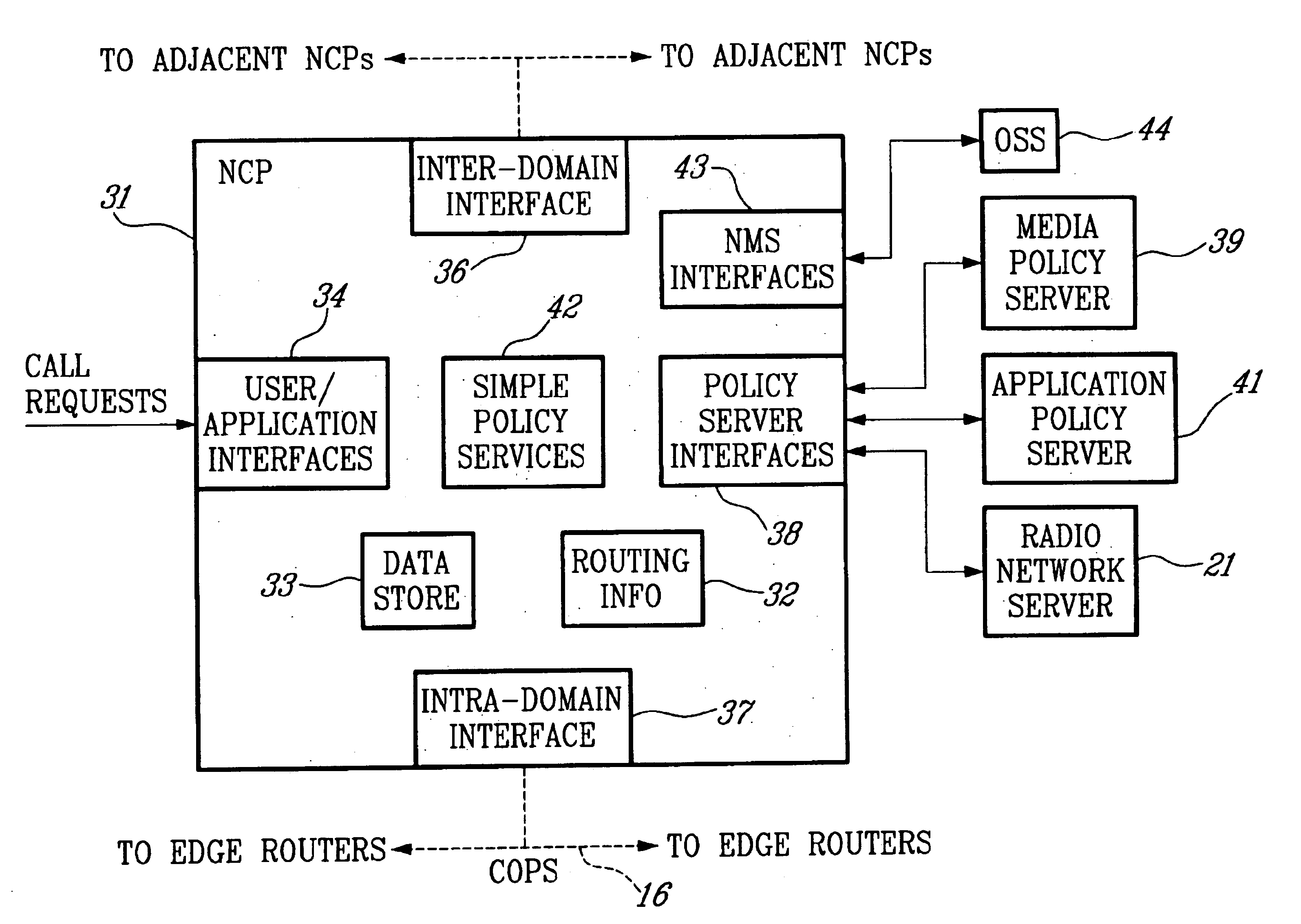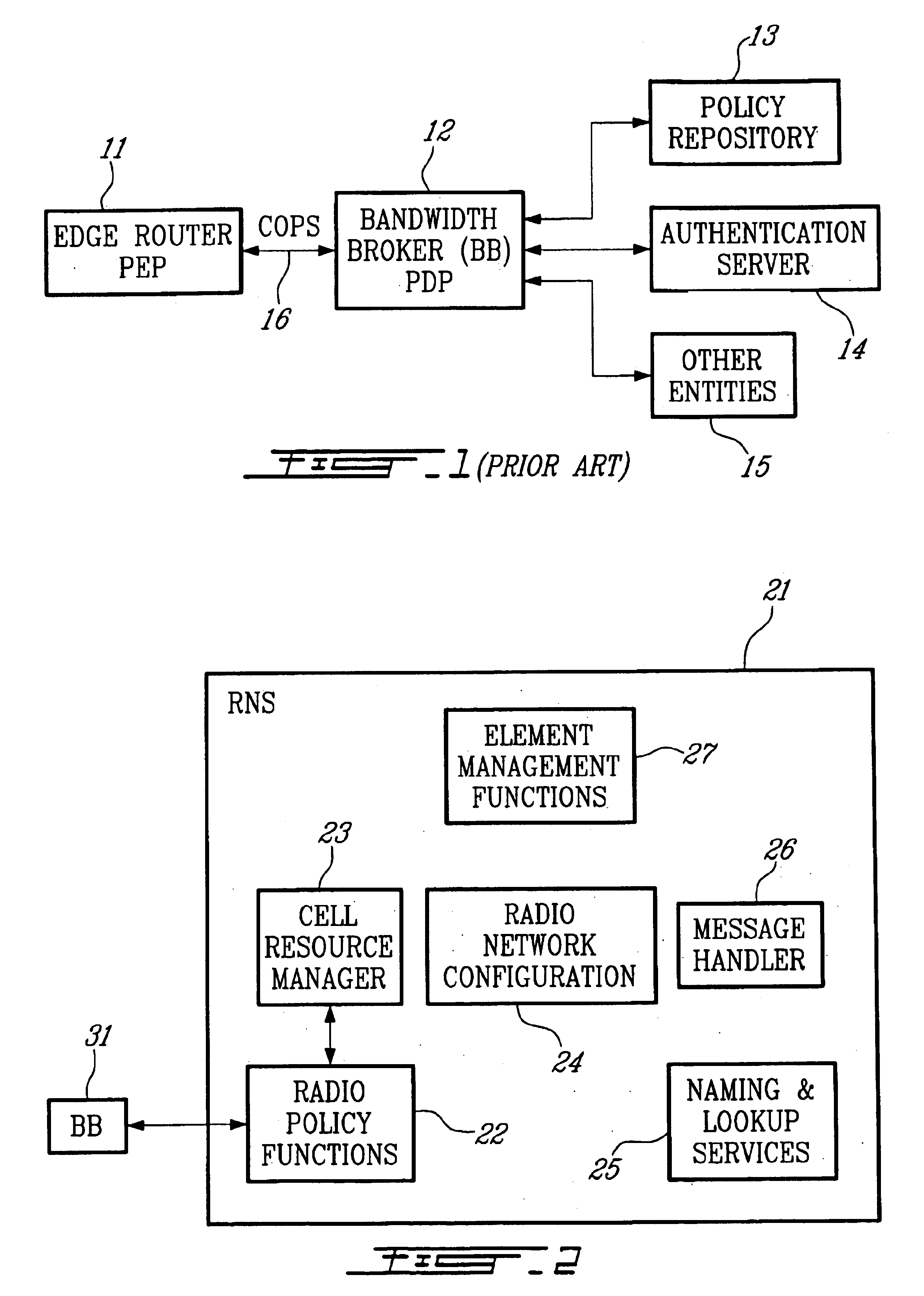Policy server and architecture providing radio network resource allocation rules
a technology of policy server and radio network resource allocation, applied in the field of telecom systems, can solve the problems of introducing new problems and new requirements on the wireless network, application may not fully utilize the allocated bandwidth, and waste of network resources
- Summary
- Abstract
- Description
- Claims
- Application Information
AI Technical Summary
Problems solved by technology
Method used
Image
Examples
Embodiment Construction
The present invention expands the role of a radio network server (for example, a radio network controller or base station controller) in an all-IP wireless network to act as a policy server toward a Bandwidth Broker (BB). The terms Bandwidth Broker, Network Control Point, and Bearer Manager are used interchangeably in the industry to refer to the same functional node, but Bandwidth Broker is currently preferred by the majority. As referred to herein, the BB does more than merely control bandwidth. Often, for example, an edge router will have the bandwidth available to carry a given application, but cannot carry the packets with the required latency to provide the desired QoS. Therefore, the BB instructs the edge router to deny access. This action is typically performed by having the BB install a policy in the edge router that denies the admission of the incoming flow. BBs do not exist today, but are proposed for the IETF policy framework architecture in order to support a real-time ...
PUM
 Login to View More
Login to View More Abstract
Description
Claims
Application Information
 Login to View More
Login to View More - R&D
- Intellectual Property
- Life Sciences
- Materials
- Tech Scout
- Unparalleled Data Quality
- Higher Quality Content
- 60% Fewer Hallucinations
Browse by: Latest US Patents, China's latest patents, Technical Efficacy Thesaurus, Application Domain, Technology Topic, Popular Technical Reports.
© 2025 PatSnap. All rights reserved.Legal|Privacy policy|Modern Slavery Act Transparency Statement|Sitemap|About US| Contact US: help@patsnap.com



